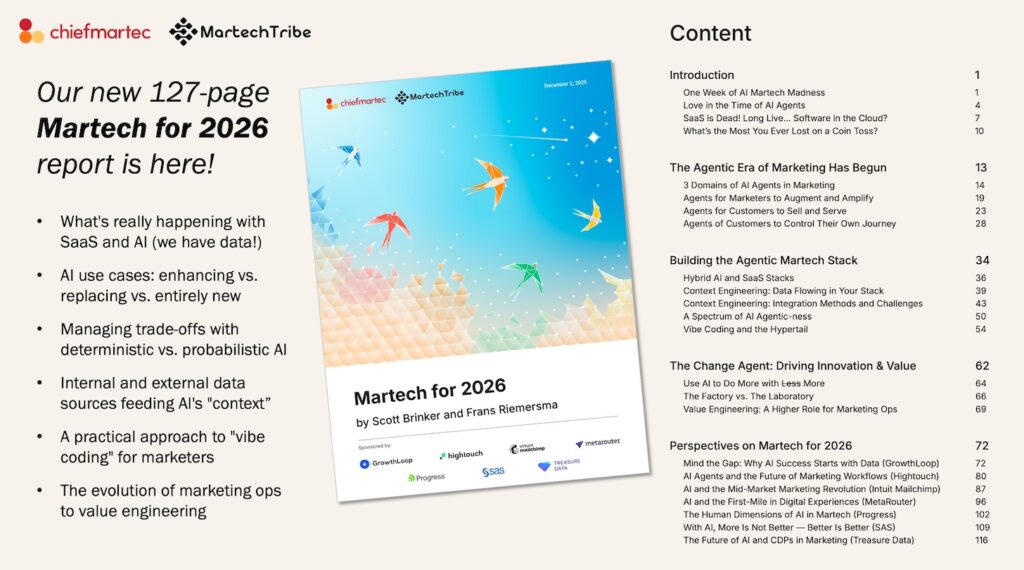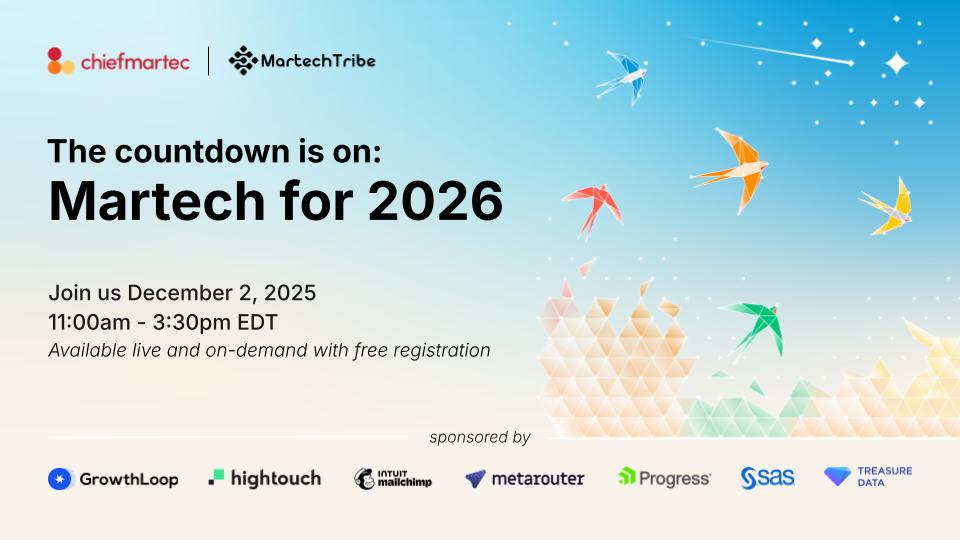I’m honored to have been invited to become a regular contributor to Ad Age, the world’s oldest (since 1930!) and largest publication in the field of advertising and marketing. The publisher has agreed to let me repost my articles here on chiefmartec.com as well.
Late October to early February is prediction season in the marketing world. As marketers, we’re innundated with articles, emails, and infographics telling us what will happen and what we need to do.
Ah, if only it were that easy.
If we piled all of these predictions on our to-do list, they would take us a lifetime and a lottery to accomplish. Even then, many of them contradict each other. Is email dead, or the most undervalued tactic in your portfolio? Are chatbots an annoying gimmick, or the fastest path to purchase?
Skeptics might also note that many of these predictions are written by marketing technology vendors. Their prognostications align rather nicely with their pitch decks. Correlation is not necessarily causation, but suspicion of bias is warranted.
How do we sort through this jumble of fortune cookies?
For a moment, set them aside. Here’s one overarching prediction for 2017 that trumps them all: things will change.
I know, my Nostradamus-like powers of prophecy are impressive. But I’m actually not being facetious.
Technology is changing at an exponential rate, and with it, so are competitive dynamics and customer expectations. We may think we know where something is headed (“native advertising on Medium, it’s going to be big!”). But the exact trajectory it will take, and how it will apply to our particular business over the next 12 months, is hard to predict. (“Oops, so much for our ad strategy on Medium.”)
More likely, something else that you weren’t even imagining will flare up unexpectedly. One day, your CEO suddenly asks you in the elevator what your plan is for physical content marketing in the 3D printing revolution. (Without blinking, you say, “Our agency is on it.”)
Trying to win in this environment of accelerating change by guessing what’s next is risky business.
A much more reliable strategy is, above everything else, to develop your organization’s general ability to adapt. That isn’t a platitude — even though it might seem like one because it’s repeated so often without the crucial follow-up: “How?”
Across the golden triangle of people, process, and technology, here’s how.
For people, you need to carve out time, resources, and executive enthusiasm for learning and experimentation. Having people take courses, attend conferences, join local meet-ups, and voraciously read (or listen to podcasts) is good. But the real learning happens when they’re encouraged to apply new ideas in their work, through silo-busting collaborations with their peers.
If you’re sequestering all your innovation in a separate “lab,” you’re doing it wrong. Everyone in marketing should have a portion of their job that’s dedicated to tinkering beyond the status quo.
For process, you must adopt agile management practices. There are a variety of lean and agile methodologies to choose from, or you can tailor your own variation. But you need to embrace iterative processes that operate on a cadence of days or weeks instead of months. Empower small teams with the authority to act swiftly, guided by ranked priorities and fast feedback loops in a fully transparent workflow.
For technology, design for change. Evaluate marketing software not just on the slick demo of what it can do by itself, but how open its architecture and APIs are. How easy is it to integrate with other software? How smoothly can you pull your data out or extend it with new functionality specific to your business?
Resist technical and contractual lock-in. If a vendor is strong-arming you to sign a multi-year contract, ask them why they’re afraid you won’t renew on the merit of their product? In a world of constant change, keeping your options open is valuable.
The better you become at adapting quickly and efficiently to change — without knowing what specific change you’ll face in advance — the better prepared you are for whatever the future brings.
The above article originally appeared on AdAge.com on January 9, 2017.




Interesting post, thanks for sharing Scott.